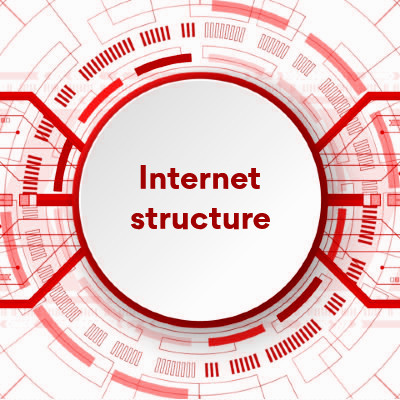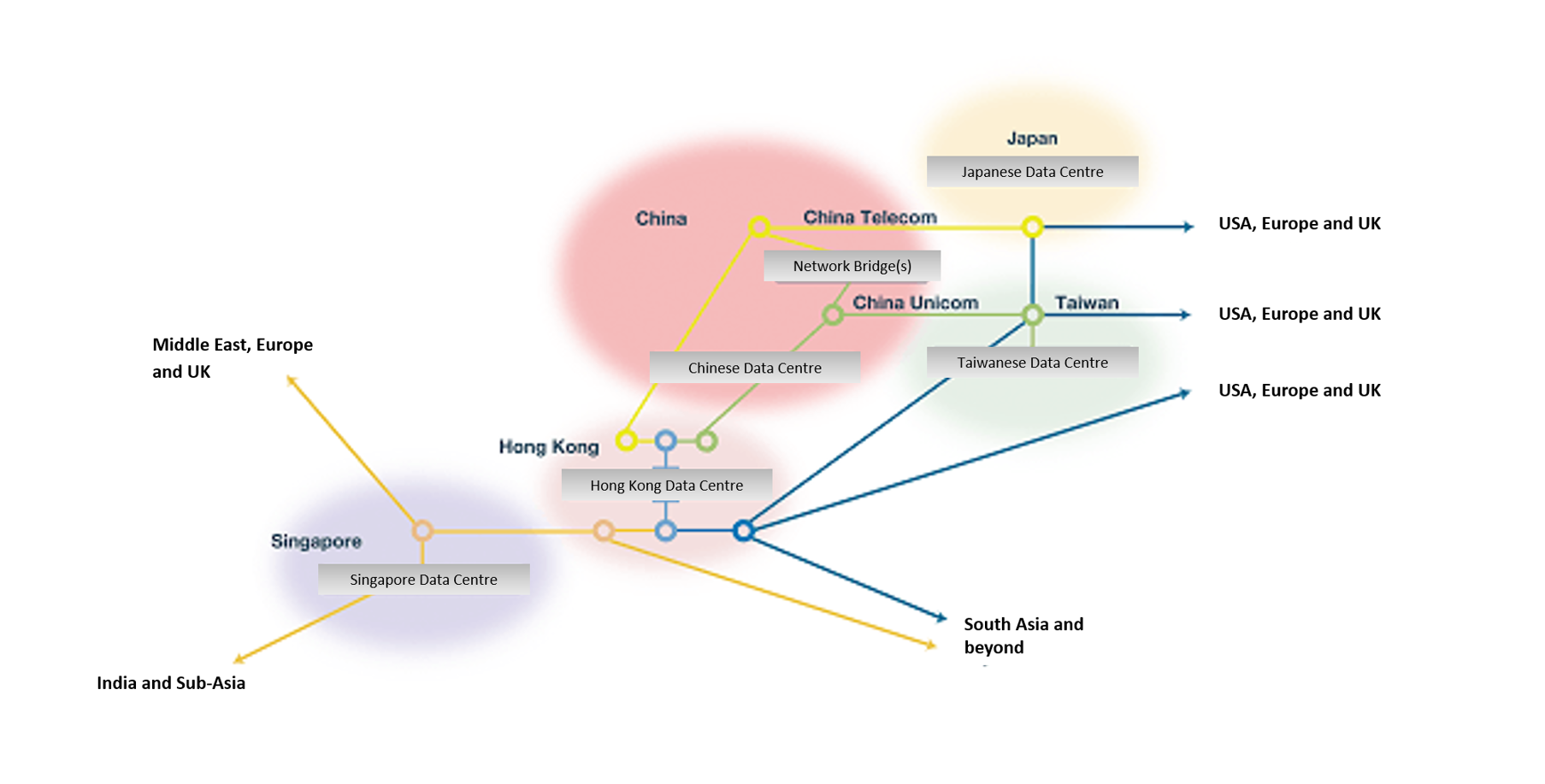


Public internet structure in China

The workings of the internet in China can be better understood in the context of traffic flow around the Internet in Asia and the rest of the world.
The movement of internet traffic around the internet is called Routing. The Routing of traffic is simply the path the internet traffic following as it flows from point A to point B. Often the internet traffic does not flow by the most direct route. The Routing paths through the internet follow the most effective costs for internet suppliers, which is not necessarily the fastest route for internet traffic.
Selecting your internet provided, for hosting and internet correction, is key to overall internet content; website, social media, APP, etc., performance.
- Internet presence in mainland China is the best way to be seen on the internet in China provided your Chinese hosting provider has access to all three major networks;
- China Telecom
- China Unicom (merge with China Netcom)
- China Mobile
This option is only available if you have a Chinese company and ICP certification.
If you have a trading website in mainland China, you are subject to Chinese rules and regulation, taxes, account returns, etc.
- The other Chinese internet option is to host your website in Hong Kong. The direct internet connection between Hong Kong and mainland China is costly, around $100 per MB per month. To reduce costs, Hong Kong hosting service providers often route mainland traffic from Hong Kong to mainland China through Japan and Taiwan and Europa through the USA.
- Only use a Hong Kong-based internet presence if it has an internet connection directly to mainland China and Europe through the Middle East. If this is not an option, use hosting providers in Japan, Taiwan or the west coast of North America; USA or Canada.
- There is currently no direct internet correction through Hong Kong to mainland China.
- Use Japan and Taiwan to host internet presence to reduce costs. Useful for large data volumes.
- Singapore, for access to the South Asia market, including Hong Kong. A poor option for mainland China, as your internet traffic will often travel through Taiwan or Japan before entering mainland China. Singapore does not have a direct internet correction to mainland China.
- Many Chinese companies offer international platform services in China, e.g., TMall Global. International platform services are located in Hong Kong with listing links in their mainland Chinese platforms' search results. In TMall Global example, the search result listing is called "Trading without borders."
This option is only available if you have a Chinese company and ICP certification.
Many Chinese companies offer platform services in China, e.g. TMall Global, these services are hosted in Hong Kong with listing links on their Chinese platforms. In TMall Global example, the list is call “Trading without borders”
- Only use a Hong Kong based internet presence if it has the connection directly to mainland China and to Europe through the Middle East.
- Use Japan and Taiwan to host internet presence to reduce costs. Useful for large data volumes.
- Singapore, for access to South Asia market. This is a poor option for China, as your internet traffic will often travel through Taiwan or Japan before entering China. Singapore does not have a direct link to mainland China.
Internet in China links to the rest of the world
The internet traffic traveling from mainland China with a destination somewhere outside mainland China, except Hong Kong, is routed through Japan or Taiwan.
- Japan for traffic on China Telecom
- Taiwan for traffic on China Unicom
Ths internet traffic to the rest of the world does not pass through Hong Kong. Hong Kong has no internet Routing to the rest of the world from mainland China.
Once the traffic reaches Japan or Taiwan the internet traffic is split;
- Traffic for south Asia travels south through Taiwan, Hong Kong and around to Singapore, India, etc.
- Traffic for Austrasia follows the same path before splitting off in Hong Kong and traveling south.
- Traffic for the rest of the world, including Russia, travels to the USA.
Traffic routed to European countries traveling through the USA gives a slower response time.
Internet in China links to and from Hong Kong
The internet costs between mainland China and Hong Kong are high ($us100 / 1 MB / pm). A lot of the traffic from and to mainland China to Hong Kong is slowly Routed through Japan and Taiwan.
If you are using a Hong Kong internet hosting service, make sure it is connecting to China directly. It is faster and more cost-effective to host your internet services in Japan or Taiwan, or both – please see GEO DNS.
Please note the Chinese platform services, e.g., QQ mail and Tmall Global, are hosted in Hong Kong and have a high-speed connection to mainland China and the rest of the world.
Internet in Hong Kong links to Rest of World
There can be problems with the Routing from Hong Kong to the Rest of the World. Routing from Hong Kong often goes through the USA in the same as the traffic traveling from China.
There are Hong Kong suppliers that Route traffic from Europe through the Middle East, which is the fastest path.
Before selecting a Hong Kong, internet hosting service check the network Routing by the fastest paths both for mainland China and the rest of the world.
Internet in China links from the rest of the world
You would think this is straightforward that internet traffic is routed to mainland China back in the same way it leaves China. Often not the case.
We have seen some cases where the Routing travels from Hong Kong to the USA back to Taiwan, Japan, and then mainland China.
As with Hong Kong Routing check your service provider’s internet traffic routing before using their services.
Internet performance within mainland China
With the above, you would think this is straightforward. Like with many internet companies worldwide, this is not the case.
Within mainland China, there are three internet providers. All government-owned and controlled. These companies have been very successful in bringing mainland China on-line over the last ten years.
There are historical reasons for this. China Telecom was originally the only telecom company in China. Split into two companies over twenty years ago. To start with China Telecom was north of the Yangtze River and China Unicom to the south of the river.
China Mobile was added later as the demand for mobile services grow over ten years ago.
There is a problem between the three network companies. The public internet corrections between the three networks are very poor. When the internet is busy in mainland China, the bridges between the systems get overloaded, resulting in slow response times and lost connections to websites, apps, etc.
The solution, connect internet services to all three internet suppliers with the GEO DNS managing traffic between the internet networks.
Notes;
- Data networks within China – This article is concerned with the internet. Chinese telecom companies offer private networks. These networks can give your internal business traffic fastest connection time national and international.
- VPNs are often said to be faster. If they are running over the internet, this will not be the case. You see fewer "hops" in network trace, but overall network speed will be the same if not slower.
In recent years, the Chinese telecom suppliers have started using their direct corrections to the rest of the world. The approach has speeded up traffic to Europa by 10% to 20%. They are still routing worldwide along the same paths as the internet.
E.g. China telecom to Europa travels between mainland China directly to Germany before the internet traffic travels around Europa. The path through the USA over to the UK and into Germany is still the same.
- In the article, we have used the names Hong Kong and mainland China. Please remember, Hong Kong is part of P R China.
Last modified: Version 1.6 - 03 December 2019